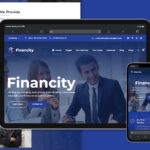As we move further into 2024, digital innovation continues to shape the online landscape, introducing new trends and technologies that redefine how we interact with the web. Staying ahead of these trends is crucial for businesses, developers, and marketers aiming to maintain a competitive edge. In this comprehensive guide, we delve into the most significant web trends of 2024, exploring their implications and how they can be leveraged for optimal results.
1. The Rise of AI-Driven Websites
Artificial Intelligence (AI) is no longer a futuristic concept but a present reality. In 2024, AI-driven websites are becoming the norm. These websites leverage machine learning algorithms to personalize user experiences, enhance security, and automate customer service.
AI-Powered Personalization
One of the most impactful uses of AI on websites is personalization. By analyzing user data, AI can tailor content, product recommendations, and even the website layout to individual preferences. This not only improves user engagement but also significantly boosts conversion rates.
Enhanced Security with AI
AI is also revolutionizing website security. Machine learning algorithms can detect and respond to potential threats in real-time, providing a more robust defense against cyber attacks. This proactive approach to security is becoming a standard feature for modern websites.
AI Chatbots and Virtual Assistants
AI-powered chatbots and virtual assistants are enhancing customer service by providing instant responses to user queries. These tools are capable of handling complex interactions, ensuring users receive support 24/7, thereby improving overall user satisfaction.
2. Progressive Web Apps (PWAs)
Progressive Web Apps are transforming the mobile web experience. Combining the best of web and mobile apps, PWAs offer offline functionality, faster load times, and a native app-like experience without the need for downloads from app stores.
Offline Functionality
PWAs can operate offline or in low-network conditions, ensuring that users have access to the content they need regardless of their connectivity. This is particularly beneficial for users in areas with unreliable internet access.
Improved Performance
Thanks to advanced caching strategies and service workers, PWAs load much faster than traditional websites. This speed enhances user experience and can lead to higher engagement and retention rates.
App-Like Experience
PWAs provide an app-like experience, including push notifications and home screen icons, without requiring users to go through app store installations. This seamless integration can lead to increased user adoption and interaction.
3. Voice Search Optimization
With the proliferation of smart speakers and voice-activated devices, voice search is becoming a dominant mode of online search. Optimizing for voice search is essential for maintaining visibility in search engine results pages (SERPs).
Natural Language Processing (NLP)
Voice search queries are typically longer and more conversational than text searches. Implementing NLP allows websites to understand and respond to these queries more effectively, improving their chances of ranking in voice search results.
Featured Snippets and Answer Boxes
Optimizing content to appear in featured snippets and answer boxes is crucial for voice search. These positions are often read out by virtual assistants, making them prime real estate for voice search visibility.
Local SEO
Voice searches are frequently used for local queries, such as finding nearby businesses. Ensuring your website is optimized for local SEO, including accurate business listings and local keywords, can significantly boost your chances of appearing in local voice search results.
4. Advanced Web Accessibility
As the internet becomes more integral to daily life, ensuring web accessibility for all users, including those with disabilities, is paramount. In 2024, there is a stronger focus on creating inclusive web experiences.
WCAG 2.2 Compliance
The Web Content Accessibility Guidelines (WCAG) 2.2 have introduced new criteria to ensure websites are accessible to people with disabilities. Compliance with these guidelines is not only a legal requirement in many regions but also an ethical responsibility for website owners.
Accessible Design
Designing for accessibility involves more than just compliance. It includes using high-contrast colors, keyboard navigability, and providing text alternatives for non-text content. These practices ensure that everyone, regardless of their abilities, can navigate and interact with your website.
Assistive Technologies
Incorporating assistive technologies, such as screen readers and voice recognition software, enhances the accessibility of your website. These tools help users with disabilities interact with web content more effectively, ensuring a more inclusive user experience.
5. Augmented Reality (AR) Integration
Augmented Reality is making significant inroads into web design, offering immersive experiences that blend digital content with the real world. AR can be used for everything from virtual try-ons to interactive product displays.
Virtual Try-Ons
E-commerce websites are leveraging AR to offer virtual try-ons for products such as clothing, accessories, and even makeup. This feature allows users to see how products will look on them before making a purchase, reducing return rates and increasing customer satisfaction.
Interactive Product Displays
AR can transform static product images into interactive 3D models. Users can rotate, zoom, and interact with products in a virtual space, providing a richer and more engaging shopping experience.
Enhanced Storytelling
AR is also being used to enhance storytelling on websites. By overlaying digital content onto the real world, brands can create immersive narratives that capture user attention and foster deeper engagement.
6. Sustainable Web Design
As awareness of environmental issues grows, sustainable web design is gaining traction. This approach focuses on reducing the carbon footprint of websites through efficient design and development practices.
Eco-Friendly Hosting
Choosing eco-friendly web hosting services that use renewable energy sources is a significant step toward sustainability. These hosts reduce the environmental impact of website operations.
Efficient Coding
Writing clean, efficient code reduces the energy consumption of websites. This includes optimizing images, minimizing the use of large libraries, and leveraging modern web technologies that improve performance.
User-Centric Design
Designing with the user in mind can also contribute to sustainability. Faster-loading websites not only improve user experience but also consume less energy, making them more environmentally friendly.
Conclusion
The web trends of 2024 are shaping a more personalized, accessible, and immersive online experience. By embracing AI-driven personalization, PWAs, voice search optimization, advanced web accessibility, AR integration, and sustainable web design, businesses can stay ahead of the curve and meet the evolving expectations of users. These trends are not just technological advancements but essential strategies for maintaining relevance and competitiveness in the digital age.





